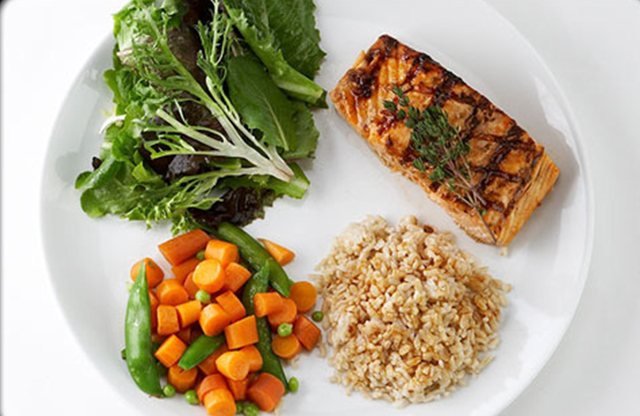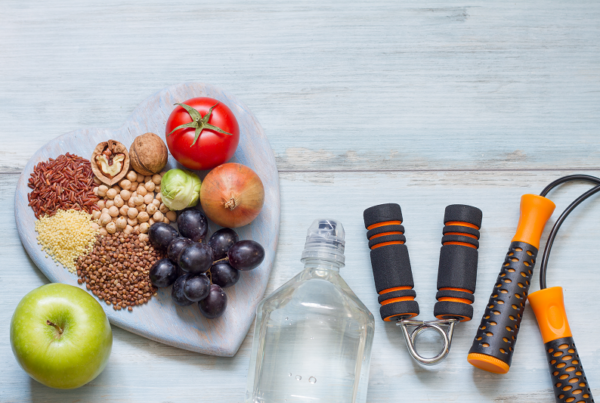
Portion control is vital when you’re trying to lose weight and keep it off. It takes a while to work it out and get used to, but the more practice, the more control and the better the weight loss.
Portion control doesn’t mean you have to deprive yourself and eat tiny amounts of everything, it means reducing the higher fat, higher carbohydrate foods and complimenting these with larger amounts of the nutrient rich, low fat foods that our bodies get the most benefit from.
10 Tips For Controlling Portion Sizes
- Never get too hungry. If the gap between meals and snacks is too long, approximately 4 hours or more, then control over portions is impossible. Blood sugars are so low that you will be out of control and always eat too much.
- Drink a large glass of water, ideally about ½ a litre or 1 pint before each meal. This curbs the appetite and eliminates dehydration, the symptoms of which feel just like hunger.
- Change how you add foods to the plate. Instead of starting with the carbohydrate, start covering the base with vegetables or salad, then protein and top it off with the smaller serving of rice or pasta. This still gives a full plate but with a much better composition.
- Take time over your food. It takes 20 minutes for the message that you’re satisfied to travel from the stomach to the brain, so by eating quickly you’ll think you’re still hungry. Chew each mouthful slowly, put cutlery down regularly and wait at least 20 minutes before deciding if you need more.
- Don’t consume alcohol prior to eating a meal. The sugar will spike blood sugars so that you may be hungrier when the food is served, and the alcohol will lower your resolve to practice portion control.
- Try to eat at the same time in the same place every day. Studies show that distractions like watching TV or reading a newspaper at meal times can cause overeating. This is due to a lack of concentration as the mind is distracted and the eating motion becomes automatic.
- Invest in smaller utensils. The larger the scoop or spoon the more we put on it. The same goes for bowls, plates and drinking cups and glasses. Using smaller ones will become routine very quickly, the same way as using larger ones did. Soon you won’t notice the difference, especially as your stomach adjusts to smaller amounts and shrinks accordingly.
- To help understand what proper portion sizes are, use everyday objects to visualise the correct size. For meat or chicken this can be the size of a deck of cards, cheese can compare to two dice and a portion of veg the size of your fist. Alternatively weigh everything just once and note how much of your plate this takes up. Maybe photograph it on your phone as a convenient reminder of what you should be aiming for.
- Have a healthy starter so you’re less hungry for the main. Maybe a green salad or a small bowl of vegetable soup which is full of nutrients and has very few calories. You will be more satisfied and eat less of the main meal which will reduce overall calorie intake.
- Elastic waist bands are not helpful in the quest for portion control as they expand as we eat, and so never warn us that we may be overdoing it. Fitted, non-elastic waist bands are a better choice as the discomfort of the tightening band sends off alarm bells when we’ve had enough. We should eat until satisfied, not until full as this indicates eating surplus to our body’s needs.
To speak to a Motivation Weight Management Adviser or to book an assessment consultation, find your local clinic contact here.



